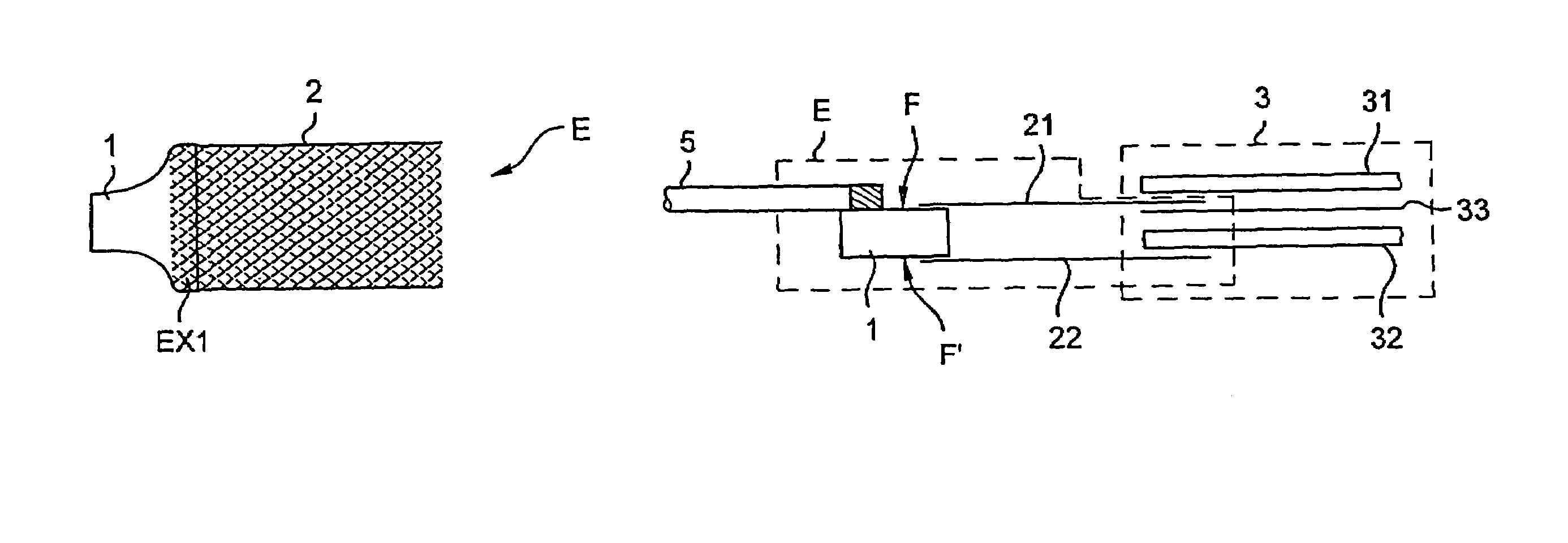Electrical connection for a resistor element made of electrically-conductive fibers
a technology of resistor elements and electrical connections, which is applied in the direction of resistors, non-adjustable resistors, heater elements, etc., can solve the problems of reducing the performance of resistor elements, presenting characteristics that are poorly compatible with industrial manufacturing requirements, and a risk of leading to significant defects in molding, so as to reduce the cost and cycle time required for manufacturing blades.
- Summary
- Abstract
- Description
- Claims
- Application Information
AI Technical Summary
Benefits of technology
Problems solved by technology
Method used
Image
Examples
Embodiment Construction
[0034]Elements that are present in more than one figure are given the same reference in all of them.
[0035]FIG. 1 shows a connection endpiece E of the invention for providing an electrical connection between a resistor element and an electrical power supply wire.
[0036]The endpiece E comprises a rigid metal connector member 2 of substantially flat shape arranged at a first zone EX1 of a metal plate 1.
[0037]Depending on the desired current, the connector member can be provided in four variants.
[0038]In a first variant, the connector member comprises an expanded metal element, and in a second variant it comprises a previously punched metal sheet. A third variant consists in using a metal fabric woven to constitute the connector member.
[0039]Finally, in a fourth variant, the connector member is obtained from a metal element that has been subjected to chemical machining so as to present roughnesses or crevasses in / or its face that is to come into contact with a resistor element.
[0040]FIG....
PUM
 Login to View More
Login to View More Abstract
Description
Claims
Application Information
 Login to View More
Login to View More - R&D
- Intellectual Property
- Life Sciences
- Materials
- Tech Scout
- Unparalleled Data Quality
- Higher Quality Content
- 60% Fewer Hallucinations
Browse by: Latest US Patents, China's latest patents, Technical Efficacy Thesaurus, Application Domain, Technology Topic, Popular Technical Reports.
© 2025 PatSnap. All rights reserved.Legal|Privacy policy|Modern Slavery Act Transparency Statement|Sitemap|About US| Contact US: help@patsnap.com


